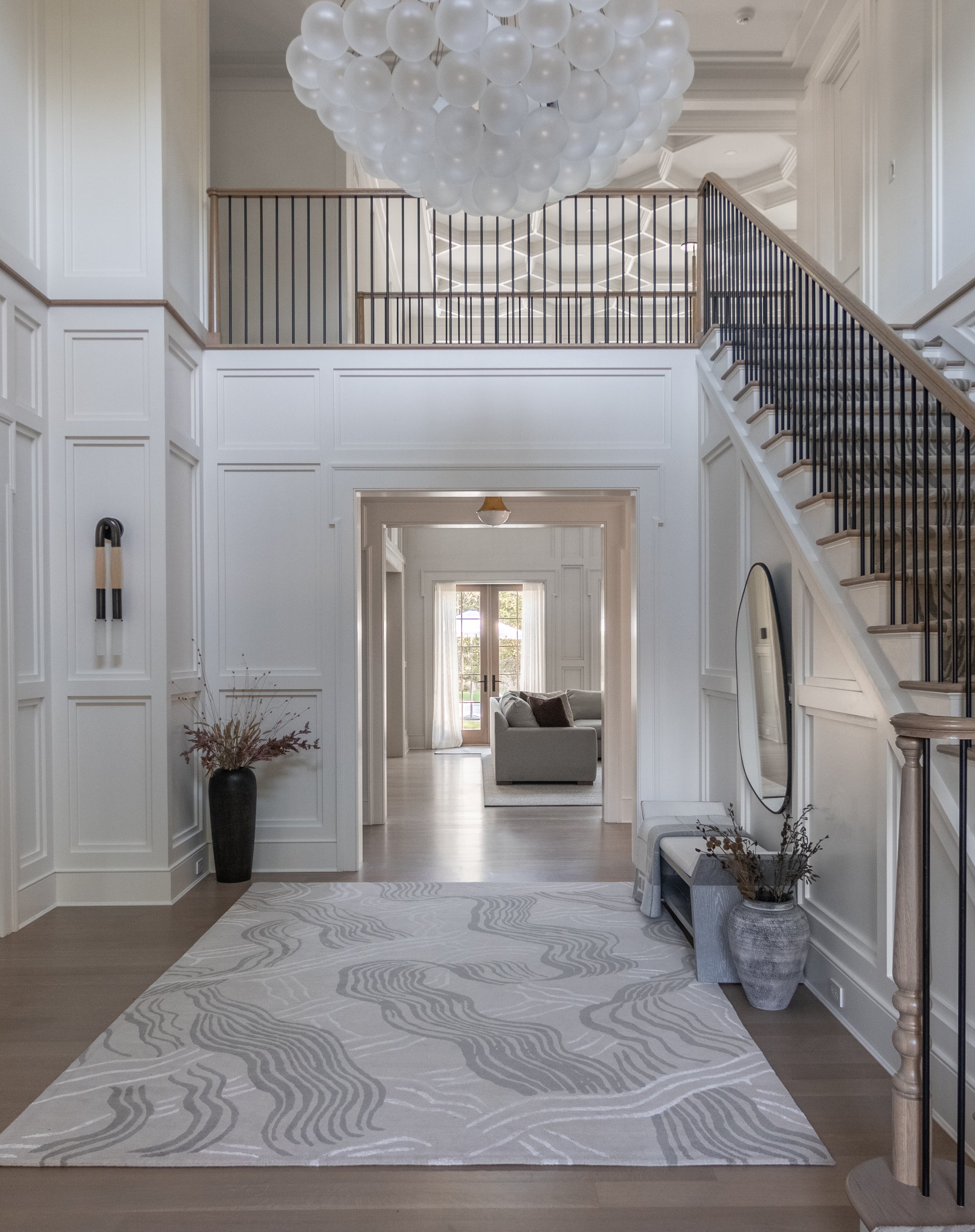Foyer Psychology: How Design Impacts Emotions
Introduction
The design of our homes has a profound influence on our emotions and well-being. Among the many spaces within a home, the foyer stands out as a crucial area that sets the emotional tone for the rest of the house. For interior design enthusiasts, homeowners, potential home builders, and real estate professionals, understanding the psychology behind foyer design can lead to creating spaces that are not only aesthetically pleasing but also emotionally resonant. In this blog post, we'll explore how foyer design impacts emotions, using insights from personal experiences with clients, practical tips, and relevant examples.
The First Meeting and Initial Impressions
When I meet with clients for the first time, I don't prepare them for the entire meeting. This approach allows me to observe their visceral reactions to the space—whether it's adjusting in their chair or exchanging a surprised quip with their significant other. This unfiltered response is invaluable for understanding what truly resonates with them.
In these initial meetings, I ask a simple yet profound question, "Okay, the house is done, and you've opened the front door. What do you see and how do you feel?" The answers often reveal a lot about their expectations and desires for their home's entryway.
The Foyer as an Instagram Filter
In today's digital age, the foyer serves as an Instagram filter for your home. It's the first impression guests get, and it often reflects how you want to be perceived. Popular responses to my question include a two-story space, a grand staircase, or a sightline through the house to the backyard. These elements are visually striking, but they also carry emotional weight.
Two-Story Spaces and Emotional Impact
A two-story foyer can create a sense of grandeur and openness. However, it can also make one feel smaller in comparison to the vast space. This isn't necessarily a negative emotion; for some, the feeling of being dwarfed by their surroundings can evoke a sense of awe and reverence. It's essential to consider whether this emotional impact aligns with the homeowner's preferences and lifestyle.
The Grand Staircase and Light Considerations
A grand staircase in the foyer is a common desire, symbolizing elegance and sophistication. However, it's crucial to consider the practical aspects. Such staircases often receive limited natural light, which can make the space feel dim and less inviting. Additionally, a staircase in the foyer means frequent visibility to guests and passersby, which isn't always desirable for everyone.
Sightlines and Emotional Connectivity
Another popular design choice is a clear sightline from the front door to the backyard. This feature can create a sense of continuity and openness, making the home feel more expansive. It also offers a teaser of the backyard oasis, enticing guests to explore further. However, it's essential to balance this with the need for privacy and security.
Practical Tips for Designing an Emotionally Resonant Foyer
Understand Your Emotional Goals: Before making any design decisions, consider how you want to feel when you enter your home. Do you want to feel energized, relaxed, or inspired?
Prioritize Natural Light: Maximize the use of natural light to create an open and inviting atmosphere. Consider adding windows, skylights, or glass doors to enhance the flow of light.
Choose Colors Wisely: Use color psychology to guide your choices. Select colors that evoke the desired emotions and create harmony with the rest of your home's decor.
Incorporate Personal Elements: Add personal touches that reflect your personality and values. This could be a family photo, a favorite piece of art, or a meaningful decor item.
Balance Aesthetics and Functionality: While it's essential to create a beautiful space, don't forget about functionality. Ensure that the foyer is practical and meets your everyday needs.
Real-Life Examples and Success Stories
One of my clients desired a foyer that felt both grand and welcoming. We achieved this by designing a two-story space with a grand staircase and large windows to flood the area with natural light. The use of warm colors and natural materials created a cozy ambiance, while the sightline to the backyard added a sense of continuity and openness. The result was a space that perfectly balanced grandeur with warmth, making the homeowners and their guests feel instantly at ease.
Another client wanted a more intimate and private foyer. We opted for a single-story design with soft, diffused lighting and a mix of textures like wood and stone. Personal touches like a family photo gallery and a cherished piece of art added emotional depth, making the space feel truly unique and personal.
Conclusion
The design of your foyer is more than just an aesthetic choice; it's a powerful tool that can shape the emotional tone of your entire home. By understanding the psychology behind foyer design and considering how different elements impact emotions, you can create a space that resonates with you and your guests on a deeper level.
If you're ready to transform your foyer into an emotionally resonant space, consider booking a consultation with one of our experienced interior designers. They can help you refine your vision, select the perfect elements, and create a foyer that truly reflects your personality and values.
Discover the power of intentional design and make your home a place of emotional resonance and beauty.
